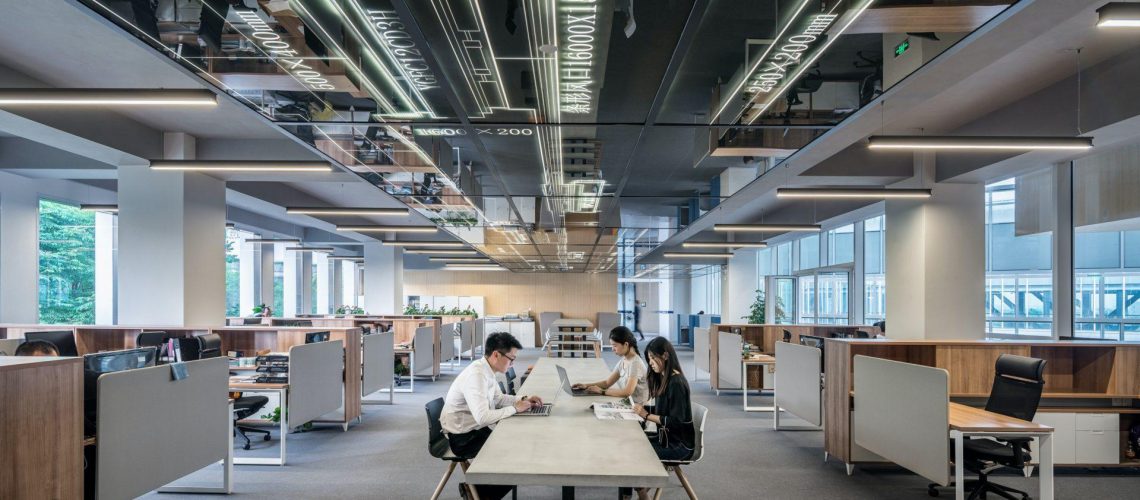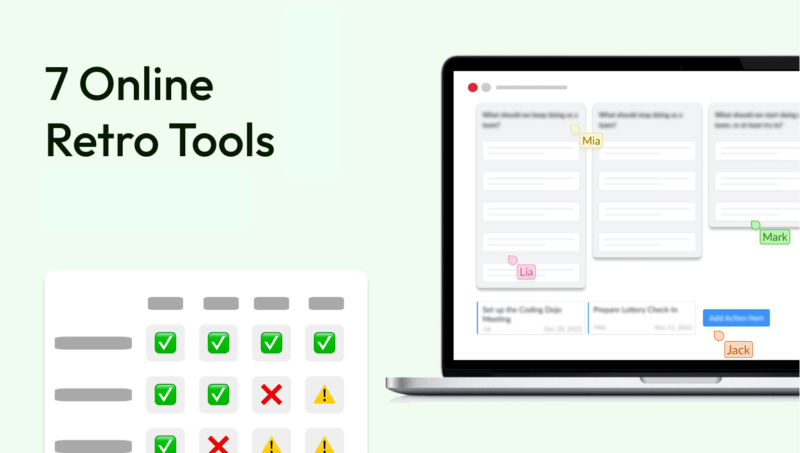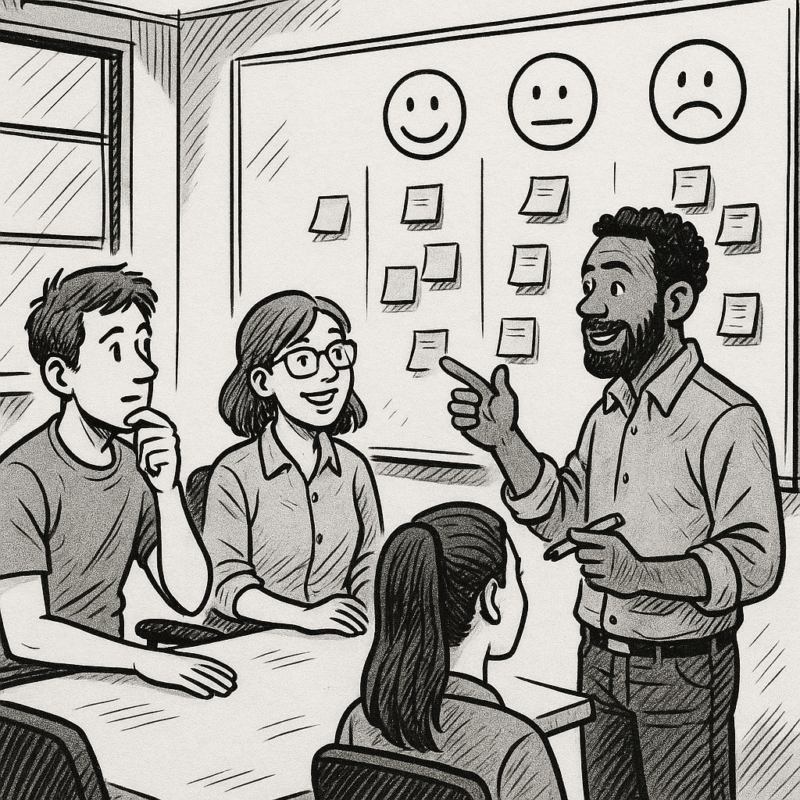An agile way of working enables companies to develop better products faster. This makes employees and customers happier. That's why many large companies, such as Miele and C&A, have already switched to Agile in part or even completely. Many more are currently planning to introduce agile working in their organization.
The biggest challenge here is the cultural change within the company. This was stated by 70 percent in a study by McKinsey . They do not know how to formulate an agile culture and fill it with life. It is therefore no wonder that only very few companies manage to introduce an agile work culture. That's what the annual 14th State of Agile Report 2020 found out.
I'll show you in detail what ingredients you need to build an agile culture in your organization. I'll explain which principles make up an agile work culture and how you can firmly anchor them step by step at all levels in the company.
What is agile culture?
Well, first I have to say: There is no universally valid agile culture definition. Nevertheless, all approaches take up a similar meaning: An agile culture focuses on flexible and innovative collaboration. For this, it aligns mindsets and processes to create added value for the customer.
To achieve this, an agile work culture reduces factors such as autocracy, control, and bureaucracy to a minimum. This means also that agile culture shifts decision-making to the lower levels of an organization. Individual teams take responsibility for business results. In return, they learn to be resilient and adaptive in dealing with complex tasks, uncertainty, and change. This is just a short description, but it basically answers the question what an agile culture is.
These 6 principles make up an agile culture
On the web, you can find a lot of articles that focus on agile culture behaviors. In these, agile experts often focus on the question “What are the 12 agile principles?”. I personally think that we can break down these 12 principles into 6 agile principles that align the company's mindset, behaviors and processes:
Purpose: Employees stand behind the company's vision - and therefore experience their work as meaningful. They live the values of their employer authentically. This affects both their actions within the company and their contact with external partners. And: Employees know how their commitment contributes to the organization achieving its goals.
Trust and transparency: Managers practice open and feedback-oriented communication and working methods. In doing so, they proactively share knowledge and resources. In this way, they create a positive culture in which everyone can express their opinions openly and honestly. This creates psychological safety.
Open error culture: Employees can openly address errors. Teams then focus on the cause of the errors - rather than looking for culprits. This helps to uncover problems or unproductive procedures at an early stage.
Innovation and willingness to learn: An agile culture is always also an agile learning culture. This means that companies encourage their employees to think outside the box and look for innovative ideas. For this, organizations need an environment in which failure is recognized as an opportunity to learn - and to achieve better results in the end.
Adaptability: The agile culture transformation requires companies to respond proactively to changes in the business environment. In practice, this means they quickly adopt new ideas and test whether they are feasible. In doing so, employees have the authority to take risks to an appropriate extent.
Focus on added customer value: Mindset and processes in the company are aligned in such a way that the final result is high added value for customers. Therefore, every agile behavior focuses on customer value.
How can you establish an agile culture change in your company?
Building an agile culture in your company is a complex process that takes time. It can be broken down into 5 essential steps:
1. Draw up a vision!
To develop a Spotify agile culture or Netflix agile culture, you need to know exactly where you are with your company and where you want to go. Therefore, you can define three to five ways of thinking and behaving that you want to change. Make sure you pick the ones that would likely make the biggest difference in driving business results. To give you an idea: McKinsey, in the study mentioned above, came up with possible mindsets and behaviors that companies can change:
For the path between the start and the goal, you need a vision. You should formulate this as briefly and concisely as possible at the beginning. It serves as a guideline for further development. The vision should not be a rigid concept that you shimmy along. Rather, you need a flexible construct that you can adapt and optimize over time. In this way, you ensure that you always run straight ahead towards the goals you have set yourself.
This is also how Netflix built its agile culture. The company developed a cultural deck called "Freedom & Responsibility". This succinctly answered the question “What is agile mindset?” and how is this important for the company.
2. Start with a selected group!
You can't start working on the agile transformation with your entire company from the beginning. Instead, you should start with a group made up of people not obviously visible to management. You need opinion leaders who support the shift to an agile culture. All you need to do is have one leader on board who trusts you and provides budget.
For example, Spark, a telecommunications company with just over 5,000 employees, began its culture change with a group of 70 volunteers. They made it their mission at the outset to promote acceptance and understanding of the culture change within the company.
3. Make it personal!
To make the shift to an agile engineering culture personally meaningful to employees, you need to take it from an organizational to a personal level. That means employees need space to define for themselves what an agile culture is to them and how it can work. This is the only way they can relate to the agile culture.
This will vary depending on personality and position in the company. However, it is crucial that employees take up the idea for an agile culture and define it for themselves. If they then share their personal experiences and problems with others, a transformation dynamic can emerge and thus release transformation energy. This accelerates the emergence of an agile culture enormously.
However, this process should not be exclusively top-down. It should start both from the top and from the bottom. The leadership in the company merely acts as a coach for the teams and provides resources. In this way, teams can find their goals and their approach. The agile culture can grow organically in this way.
4. Design the architecture of agile culture!
You have now created an understanding of the agile mindset in the minds of employees. To manifest it, you need an agile culture architecture. For this, you need to redesign structures, processes, and technologies to support the behavioral expectations.
Agile frameworks like Scrum, Kanban, or even that in a scaled agile context Scaled Agile Framework SAFe help. However, you don't have to choose a single framework. You can pick different parts of different frameworks and combine them. The only thing that matters is that you build a custom framework that fits your organization.
To choose the right components for your framework, you need to know the pain points and the goals of your organization. Only with this knowledge can you choose the right elements. And: The frameworks must fit the value stream of your organization and increase customer value.
5. Monitor and learn!
You cannot implement an agile culture in your organization overnight. And, be prepared to make mistakes in the process of finding a culture fit. However, this is important to learn and continue to evolve the culture in the right direction for you. In the process, there will be teams that can quickly implement the new way of thinking and behaving. Other teams will need time to adjust to the new way of working. However, that doesn't matter. The learning process is fundamental to continuing to strengthen the culture.
To monitor and evaluate your progress, you can conduct regular retrospectives. These will show you where the agile culture is already working well and where there is a particularly strong need for readjustment.
"If you adopt only one agile practice, let it be retrospectives. Everything else will follow "
Woody Zuill (Agile Pioneer & Evangelist)
ING Diba, one of the pioneers of agile working practices in banking, has repeatedly examined the quality of its tracking measures and the resulting findings for this purpose. To do this, the company enlisted among others the help of INSEAD economics professor Maria Guadalupe – you have to have exactly this claim.
Conclusion
The an agile transformation is a challenge that requires companies to innovate all pillars of their organization. Particularly important is the creation of an agile culture. Only with this companies can change their elemental structures, processes, and technology to actually operate in an agile manner at all levels.
To help you create an agile culture, we have a small, free one Agile Cultural Training. developed, which consists in particular of best practices from international experts in video format. This shows you in detail how to implement the agile way of thinking and behaving in your organization. – are welcome to take a look!








